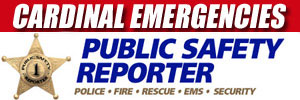Hypothermia … from preventing to re-warming, presented by Howard J. Donner, MD, Wilderness Medicine Educator | Guide (see playlist index below/hover bottom of video for next/prev controls).
Victims of hypothermia are often (1) elderly people with inadequate food, clothing, or heating; (2) babies sleeping in cold bedrooms; (3) people who remain outdoors for long periods—the homeless, hikers, hunters, etc.; and (4) people who drink alcohol or use illicit drugs.
Recognizing Hypothermia
Warnings signs of hypothermia:
Adults:
• shivering, exhaustion
• confusion, fumbling hands
• memory loss, slurred speech
• drowsiness
Infants:
• bright red, cold skin
• very low energy
Take Action
If you notice any of these signs, take the person’s temperature. If it is below 95°, the situation is an emergency—get medical attention immediately. Heart muscle with hypothermia is more susceptible to irregular rhythm that could be deadly.
If medical care is not available, begin warming the person, as follows:
• Get the victim into a warm room or shelter.
• If the victim has on any wet clothing, remove it.
• Warm the center of the body first—chest, neck, head, and groin—using an electric blanket, if available. Or use skin-to-skin contact under loose, dry layers of blankets, clothing, towels, or sheets.
• Warm beverages can help increase the body temperature, but do not give alcoholic beverages. Do not try to give beverages to an unconscious person.
• After body temperature has increased, keep the person dry and wrapped in a warm blanket, including the head and neck.
• Get medical attention as soon as possible.
A person with severe hypothermia may be unconscious and may not seem to have a pulse or to be breathing. In this case, handle the victim gently, and get emergency assistance immediately. Even if the victim appears dead, CPR should be provided. CPR should continue while the victim is being warmed, until the victim responds or medical aid becomes available. In some cases, hypothermia victims who appear to be dead can be successfully resuscitated.
PLAYLIST INDEX FROM VIDEO SEQUENCE (top of page)
View count as of Sunday, January 26, 2014 at 10:00 a.m. CST.
Physiology of Hypothermia (1 of 7)
by MedWild 2,677 views
Dr. Donner explains hypothermia physiology and human adaptation to cold.
Shivering and Hypothermia (2 of 7)
by MedWild 1,781 views
Dr. Donner discusses the shivering response to cold.…
Alcohol and Hypothermia (3 of 7)
by MedWild 1,169 views
Dr. Donner discusses the effect of alcohol on core body temperature.
Mild vs. Severe Hypothermia (4 of 7)
by MedWild 1,606 views
Dr. Donner discusses the differences in recognition and treatment of mild vs. severe hypothermia.
CPR and Hypothermia (5 of 7)
by MedWild 1,007 views
Dr. Donner details multiple considerations with performing CPR on a hypothermic patient…
Hypothermia Treatment (6 of 7)
by MedWild 1,276 views
Dr. Donner discusses important treatment considerations for the hypothermic patient.…
Rewarming a Hypothermic Patient (7 of 7)
by MedWild 1,067 views
Dr. Donner discusses important considerations in rewarming a hypothermic patient.
Stay informed with news from PublicSafetyReporter.com’s Emergencies Behind the Scenes Facebook page — Facebook.com/CardinalEmergencies. Includes links to favorite public safety and emergency rescuers and product manufacturers and safety companies that have facebook pages. Submit your pictures or just stay up-to-date on with fire, rescue, EMS and police photo galleries. Please add your public safety photo to the wall album — go direct to the Arlington Cardinal Emergencies Behind the Scenes photos. For a list of all of The Cardinal Facebook fan pages, go to Arlingtoncardinal.com/about/facebook …
